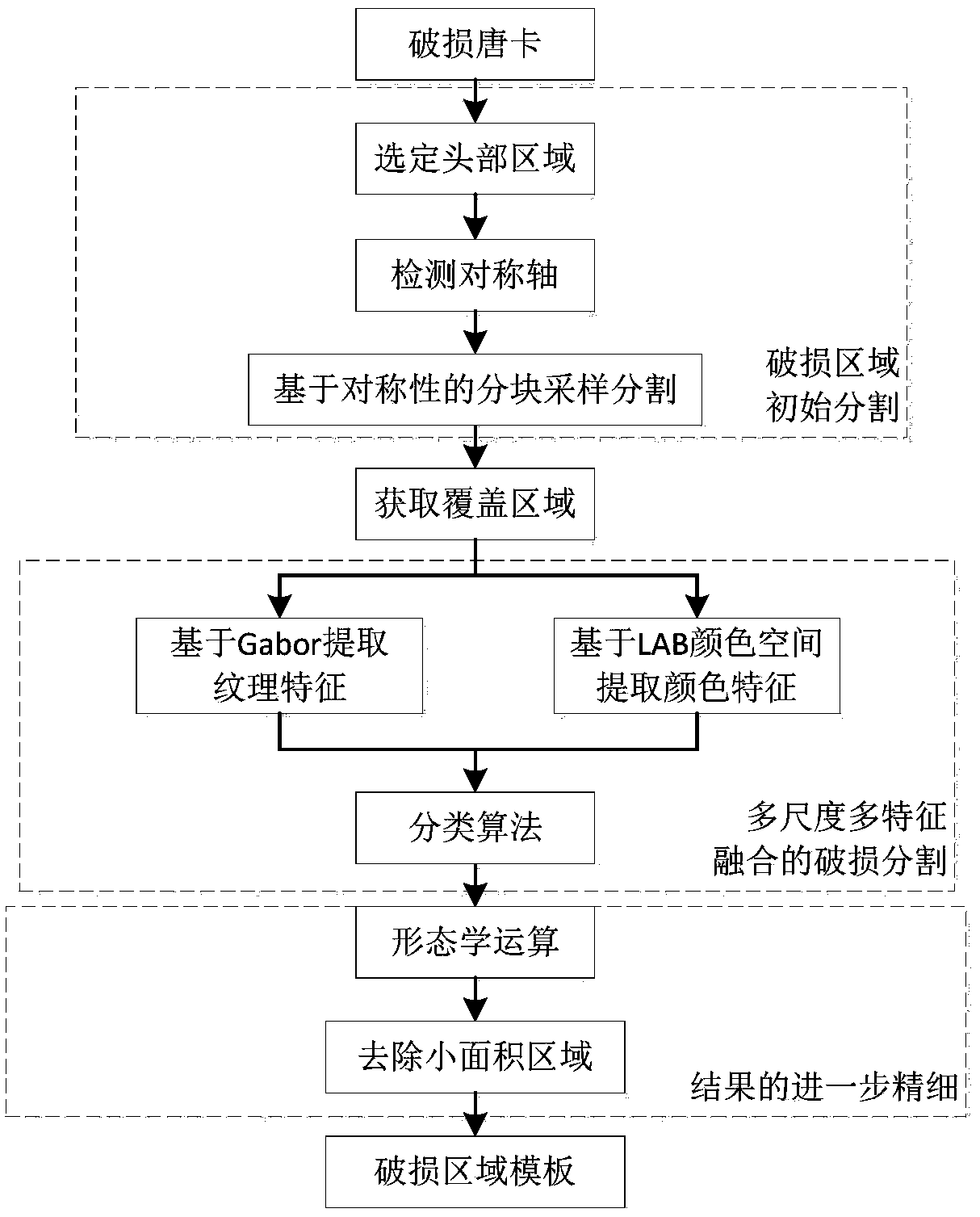An Automatic Segmentation Method for Consistently Damaged Regions of Thangkas of Buddha Statues
A damaged area, automatic segmentation technology, applied in the field of image processing
- Summary
- Abstract
- Description
- Claims
- Application Information
AI Technical Summary
Problems solved by technology
Method used
Image
Examples
Embodiment Construction
[0149] An automatic segmentation method for consistent damaged areas of Buddha statues like thangkas, comprising the following steps:
[0150] a. Select the head area
[0151] The original Thangka image to be segmented obtained through digitization is a color image, denoted as F(x, y), and the head area t(x, y) of the Buddha statue in the image is obtained by manual selection or computer selection; where , the computer selection process is as follows:
[0152] a.1 Thangka image normalization
[0153]Through the statistics of the digital image of Thangka, it is concluded that the image size suitable for Thangka image processing and recognition is: 400×520, so the size of the damaged Thangka image is normalized to 400×520;
[0154] a.2 Semi-automatic selection of the head region
[0155] Through the experimental statistics of the digital images of Thangka, it is found that the head area is generally in the middle and upper part of the normalized image. Therefore, the pixel p...
PUM
 Login to View More
Login to View More Abstract
Description
Claims
Application Information
 Login to View More
Login to View More - R&D
- Intellectual Property
- Life Sciences
- Materials
- Tech Scout
- Unparalleled Data Quality
- Higher Quality Content
- 60% Fewer Hallucinations
Browse by: Latest US Patents, China's latest patents, Technical Efficacy Thesaurus, Application Domain, Technology Topic, Popular Technical Reports.
© 2025 PatSnap. All rights reserved.Legal|Privacy policy|Modern Slavery Act Transparency Statement|Sitemap|About US| Contact US: help@patsnap.com



